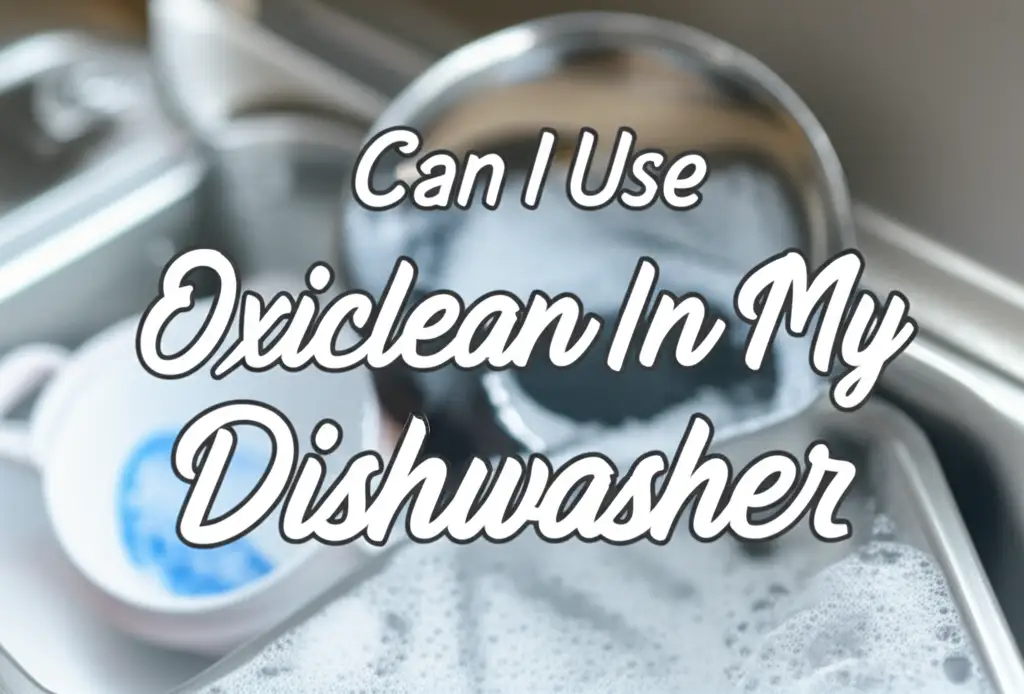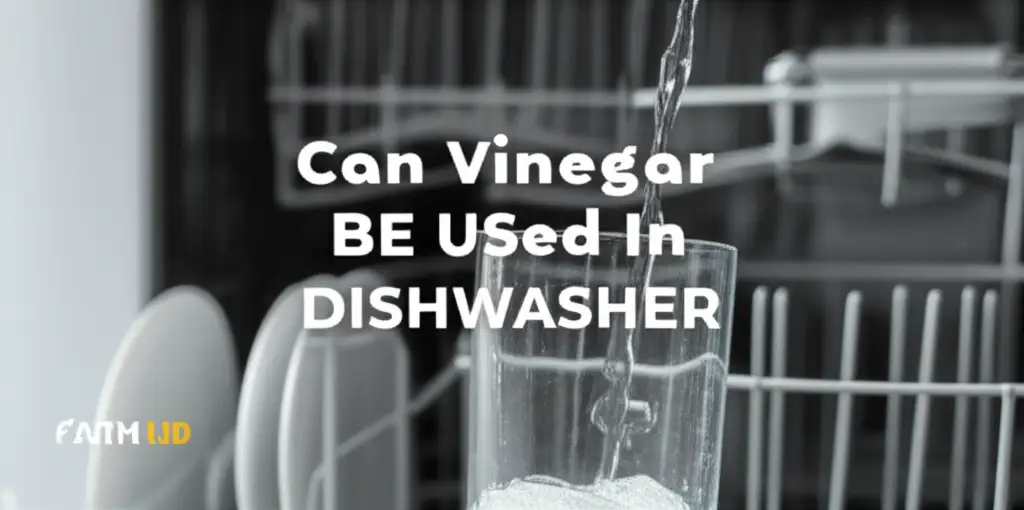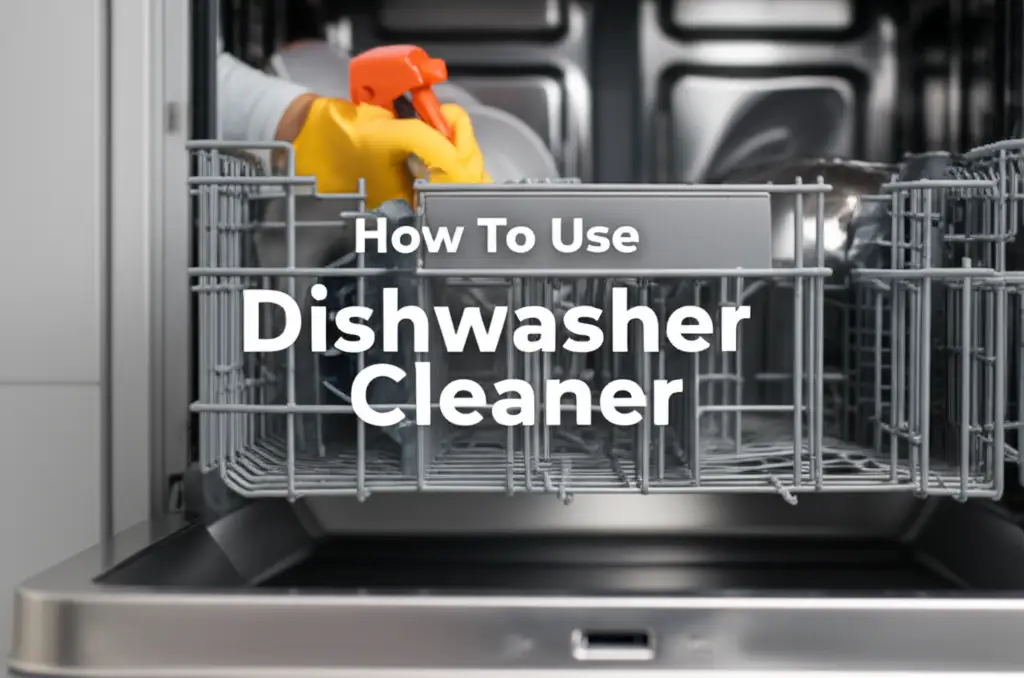· Elira Thomsen · Home Maintenance, Cleaning Tips, Kitchen Appliances · 15 min read
How To Clean And Disinfect A Dishwasher

Refresh Your Kitchen: How To Clean And Disinfect A Dishwasher
Does your dishwasher seem to leave dishes less than sparkling? Perhaps an unpleasant odor greets you when you open the door. These are common signs that your dishwasher needs attention. A clean dishwasher means truly clean dishes and a fresher kitchen. Cleaning and disinfecting your dishwasher regularly removes food particles, grease, mineral buildup, and odors. I will show you how to clean and disinfect a dishwasher effectively. This guide covers everything from simple routine care to a thorough deep clean. You will learn the right tools and steps for a sparkling, sanitized appliance.
Takeaway
- Regularly clean your dishwasher filter to prevent clogs and odors.
- Use natural cleaners like white vinegar and baking soda for deep cleaning and disinfection.
- Pay attention to spray arms, racks, and door gaskets for trapped debris and grime.
- Follow a consistent cleaning schedule to maintain appliance performance and hygiene.
A dishwasher cleans your dishes. However, it also needs cleaning itself. To clean and disinfect a dishwasher, you should remove the filter and clean it by hand. Then, wipe down the interior, spray arms, and door gasket. Finally, run a hot cycle with white vinegar, followed by a cycle with baking soda. This process removes grime, mold, and odors.
Why Your Dishwasher Needs Regular Cleaning and Disinfecting
Your dishwasher works hard every day. It washes away food, grease, and grime from your dishes. Over time, some of this debris stays behind inside the machine. These leftover particles can build up in the filter, spray arms, and drain. This buildup creates a breeding ground for bacteria, mold, and mildew.
An unclean dishwasher cannot clean dishes properly. You might notice cloudy glasses or food residue on plates. It also often produces a musty or stale smell. This smell can spread through your kitchen. Regular cleaning and disinfecting ensures your dishwasher operates at its best. It keeps your dishes truly clean and helps maintain a hygienic kitchen environment. It also extends the life of your appliance by preventing blockages and wear.
Essential Tools and Supplies for Dishwasher Cleaning
Before you begin, gather your cleaning supplies. You likely have most of these items already at home. These tools help you clean every part of your dishwasher. Using the right supplies makes the job easier and more effective. It also ensures you use safe and powerful cleaning agents.
Here is what you will need:
- White Vinegar: This is a natural disinfectant and deodorizer. It cuts through grease and hard water stains. Many people wonder where to put vinegar in dishwasher to clean. You simply place a cup in the top rack.
- Baking Soda: Baking soda is an excellent deodorizer and mild abrasive. It helps scrub away grime. It absorbs bad smells.
- Dish Soap: A small amount of dish soap helps clean removable parts. Use it for scrubbing the filter or racks.
- Old Toothbrush or Small Brush: This is perfect for scrubbing tight spots. It reaches crevices and corners that are hard to clean otherwise.
- Microfiber Cloth or Sponge: These are great for wiping down surfaces. They absorb grime and water well.
- Pliers (Optional): Sometimes, the dishwasher filter or spray arms can be difficult to remove. Pliers might help loosen stubborn parts.
These simple items provide a powerful cleaning combination. They work together to leave your dishwasher fresh and spotless. You do not need harsh chemicals for a thorough clean.
Step-by-Step Guide: Cleaning Your Dishwasher Filter
The dishwasher filter catches food particles. It prevents them from recirculating onto your dishes. This filter can become clogged with grease and food debris. A dirty filter leads to foul odors and poor washing performance. Cleaning it regularly is a crucial first step. I make sure to clean mine often.
Here is how to clean your dishwasher filter:
- Locate the Filter: The filter is usually at the bottom of the dishwasher. It is often under the lower spray arm. Some dishwashers have a cylindrical filter. Others have a flat mesh filter. Consult your dishwasher’s manual if you cannot find it.
- Remove the Filter: Twist or lift the filter counter-clockwise to unlock it. Some filters pull straight up. Be gentle to avoid breaking any clips. You can find specific instructions for different models, for example, on how to clean a filter on a Whirlpool dishwasher or how to clean filter in old GE dishwasher.
- Rinse Under Running Water: Take the filter to your sink. Rinse it under warm, running water. Use a soft brush or old toothbrush to remove visible food particles. You may need to scrub gently.
- Clean with Dish Soap: Apply a small amount of dish soap to the filter. Scrub it thoroughly with your brush. Make sure to get into all the mesh crevices. This removes grease and stubborn residue.
- Rinse Thoroughly and Reinstall: Rinse the filter again until all soap and debris are gone. Ensure it is completely clean. Then, carefully place it back into its slot. Twist it clockwise or push it down until it locks securely.
Cleaning the filter often prevents major issues. I try to check mine at least once a month. This simple step keeps your dishwasher running efficiently. It also helps prevent unpleasant odors. It is important to know how often should you clean your dishwasher filter to maintain proper function.
Deep Cleaning Your Dishwasher’s Interior and Components
Once the filter is clean, it is time to tackle the rest of the dishwasher’s interior. Food particles, grease, and hard water can coat surfaces. Mold can also grow in damp, dark areas. A deep clean ensures every part is spotless and sanitized. This step prepares the dishwasher for disinfection. I often find forgotten crumbs in these areas.
Cleaning Spray Arms and Racks
The spray arms have small holes that jet water onto your dishes. These holes can become clogged with debris or mineral deposits. Clogged spray arms mean uneven water distribution. This results in dirty dishes. Dishwasher racks can also accumulate grime.
- Remove Spray Arms: Carefully unclip or unscrew the spray arms. Most dishwashers have at least two, one on the bottom and one in the middle. Some models require a gentle pull to detach.
- Clear Clogs: Use a toothpick or small wire to poke through each spray hole. This clears any blockages. Rinse the spray arms under warm water. Scrub them with an old toothbrush and dish soap if they are greasy.
- Clean Racks: Pull out the dish racks. Inspect them for any stuck-on food or grime. Wipe them down with a damp cloth or sponge. For tough spots, use a brush with dish soap. Reinstall the spray arms and racks after cleaning. Ensure they spin freely.
Scrubbing the Dishwasher Door Gasket and Crevices
The rubber gasket around the dishwasher door creates a seal. This seal prevents water from leaking out. However, it also traps food particles, grease, and mold. This area is often overlooked. It can be a major source of odors and unhygienic conditions.
- Wipe Down the Gasket: Open the dishwasher door wide. Use a damp microfiber cloth or sponge. Wipe down the entire rubber gasket. Pay close attention to the folds and crevices. This is where most grime hides.
- Scrub Stubborn Areas: For tough grime or mold, use an old toothbrush. Dip the brush in a solution of warm water and dish soap. Gently scrub the affected areas. You may need to apply a bit of pressure.
- Address Mold: If you find mold, create a paste of baking soda and a small amount of water. Apply the paste to the moldy areas. Let it sit for 10-15 minutes. Then, scrub it away with the toothbrush. Rinse thoroughly. This is an effective way to clean mold off dishwasher surfaces.
- Clean the Door Edges: Do not forget the edges of the door. Wipe down the control panel and the area just inside the door. These spots often collect splatters and dust. Ensure all surfaces are clean and shiny.
This deep cleaning removes visible dirt and prepares the dishwasher for disinfection. It helps eliminate hidden sources of odors and bacteria. Your dishwasher will already look and smell much better.
Natural Disinfecting Methods: Vinegar and Baking Soda Power
Once the physical cleaning is complete, it is time to disinfect and deodorize. White vinegar and baking soda are powerful, natural cleaners. They effectively kill germs and eliminate stubborn odors. They are safe for your appliance and leave no harsh chemical residue. I always use these two for a truly fresh dishwasher.
Disinfecting with White Vinegar
White vinegar is an acidic powerhouse. It breaks down mineral deposits and soap scum. It also acts as a natural disinfectant and deodorizer. Using vinegar helps sanitize the entire interior of your dishwasher. It also leaves your machine sparkling.
- Empty Your Dishwasher: Ensure there are no dishes or utensils inside. The dishwasher must be empty for this cleaning cycle. This allows the vinegar to work on all internal surfaces.
- Place Vinegar in a Bowl: Pour one to two cups of white vinegar into a dishwasher-safe bowl. Place this bowl on the top rack of your empty dishwasher. Do not put the vinegar in the detergent dispenser.
- Run a Hot Cycle: Close the dishwasher door. Run a full hot water cycle. Choose the hottest setting available. The hot water and steam help the vinegar work its magic. They spread the vinegar vapor throughout the machine. This step will sanitize and descale your dishwasher. It helps dissolve any remaining grease and mineral buildup.
- Let It Air Dry: Once the cycle finishes, open the dishwasher door. Allow the interior to air dry for a while. This helps dissipate any lingering vinegar smell. It also allows the moisture to escape.
Deodorizing and Scrubbing with Baking Soda
After the vinegar cycle, baking soda provides a final touch. It is excellent for absorbing any remaining odors. It also helps scrub away light residues. Baking soda is a gentle abrasive. It will not scratch your dishwasher’s interior.
- Sprinkle Baking Soda: After the vinegar cycle, sprinkle one cup of baking soda across the bottom of the dishwasher. Spread it evenly over the base.
- Run a Short Hot Cycle: Close the door. Run a short hot water cycle. A rinse cycle or a quick wash setting works well. Do not use detergent. The baking soda will create a mild abrasive solution. It will absorb lingering odors. It will also gently scrub the interior. This step neutralizes any remaining smells.
- Final Wipe Down: Once the cycle is complete, do a quick final wipe-down. Use a clean, damp cloth to wipe the interior. This removes any baking soda residue. It leaves your dishwasher sparkling clean and fresh.
For models like Bosch, you might be able to use a specific clean cycle. Learn how to run clean cycle on Bosch dishwasher if you own one. This two-step natural cleaning method is highly effective. It ensures your dishwasher is not just clean but truly disinfected and odor-free.
Addressing Specific Dishwasher Issues During Cleaning
Sometimes, standard cleaning methods are not enough. Your dishwasher might have persistent hard water stains. It might also have stubborn, unpleasant smells. These issues require targeted attention. I have faced these challenges myself. Here is how I tackle them.
Tackling Hard Water Stains
Hard water contains minerals like calcium and magnesium. These minerals leave white, chalky residue. This residue builds up on the interior of your dishwasher. It can also coat your dishes. Regular vinegar washes usually help. However, tough stains may need more.
- Lemon Juice Boost: For very stubborn hard water stains, add lemon juice. After your vinegar cycle, rub lemon juice directly onto the stained areas. Let it sit for a few minutes. Then wipe it away. The acidity of lemon juice is powerful.
- Citric Acid: You can also use citric acid powder. Dissolve a few tablespoons in hot water. Apply this solution to the stains. Alternatively, put a few tablespoons directly in the detergent dispenser. Then run an empty hot cycle. This is a very effective descaler.
Eliminating Persistent Unpleasant Smells
A persistent bad smell often points to hidden grime or blockages. Mold in hidden areas is a common culprit. Sometimes, it is simply trapped food particles decomposing. My approach is to ensure all areas are checked.
- Check the Drain: Ensure the dishwasher drain is clear. Sometimes, food debris gets stuck in the drain line. This can cause odors. If you are comfortable, you can inspect the drain under the filter.
- Clean the Vent: Some dishwashers have a vent. This vent can accumulate grime and odor-causing bacteria. Cleaning it can make a difference. You can find information on how to clean dishwasher vent for specific models.
- Run Multiple Cycles: If the smell persists, run additional cycles. Use a specialized dishwasher cleaner product. Follow the product instructions. These cleaners often contain stronger degreasing and sanitizing agents.
- Air Out: After cleaning, leave the dishwasher door ajar. Allow air to circulate. This helps prevent moisture buildup. Moisture often leads to mold and musty smells. Proper air circulation is key.
By addressing these specific issues, you can restore your dishwasher. It will perform better and smell much fresher. Do not let these common problems linger. They can affect your dishwashing results.
Maintaining a Clean Dishwasher: Routine Care Tips
Cleaning your dishwasher thoroughly is a great start. However, maintaining that cleanliness is crucial. Regular, small actions prevent major buildup. They keep your dishwasher running efficiently year-round. I follow these simple habits to keep my dishwasher in top shape. These tips also extend the life of your appliance.
Here are some routine care tips:
- Scrape, Don’t Rinse: Modern dishwashers are designed to handle food particles. You should scrape large food scraps into the trash. Avoid pre-rinsing dishes excessively. The detergent needs food particles to cling to and work effectively. Too much pre-rinsing can confuse sensors and leave detergent residue.
- Regular Filter Checks: Make it a habit to check your dishwasher filter weekly. Quick rinses under the tap for visible debris take only seconds. This prevents major clogs and odors from forming. I do this every Sunday when I clean the kitchen.
- Wipe Down the Door and Gasket: After each wash, or at least a few times a week, quickly wipe down the door. Pay attention to the gasket. This removes any trapped food bits or splashes. It prevents mold and grime from settling in.
- Leave the Door Ajar After Cycles: Once a wash cycle finishes, leave the dishwasher door slightly ajar. This allows moisture to escape. It helps the interior dry completely. This prevents the growth of mold and mildew. It also prevents musty odors.
- Monthly Vinegar or Baking Soda Cycle: Even with regular wiping, a deeper clean is needed. Run an empty cycle with white vinegar or baking soda once a month. Alternate between them. This helps prevent mineral buildup and keeps the interior sanitized. You can use the specific clean cycle if your dishwasher has one.
- Use Rinse Aid: Rinse aid helps water sheet off dishes. It prevents water spots and streaks. It also helps the dishwasher interior dry faster. This reduces moisture, which fights odor and mold. Always use a good quality rinse aid.
- Inspect Spray Arms and Drain: Occasionally, visually inspect the spray arms and the drain area. Look for any blockages or unusual residue. Address these promptly. Catching issues early prevents larger problems later on.
Following these routine care tips ensures your dishwasher remains a hardworking and hygienic appliance. It saves you time and effort in the long run. A well-maintained dishwasher also uses less energy and water over time.
FAQ Section
How often should I clean my dishwasher?
You should perform a light cleaning, like wiping down the door and checking the filter, weekly. A deep clean with vinegar and baking soda should happen once a month. This schedule keeps your dishwasher hygienic and prevents buildup. It helps maintain optimal performance.
Can I use bleach to clean my dishwasher?
No, it is not recommended to use bleach in your dishwasher. Bleach can damage rubber seals and plastic components over time. It can also react with certain metals, causing corrosion. If your dishwasher has stainless steel parts, bleach can stain them. Stick to vinegar and baking soda for safe cleaning.
Why does my dishwasher smell bad after cleaning?
A bad smell after cleaning often means hidden grime or a persistent issue. Check the filter again for any missed debris. Inspect the drain for blockages. Also, mold might be in unseen areas, especially the vent or under the spray arms. Running another hot cycle with baking soda can help absorb lingering odors.
How do I remove hard water stains from my dishwasher?
Hard water stains are mineral deposits. White vinegar is very effective at dissolving them. You can also use citric acid powder. Add a few tablespoons of citric acid to the detergent dispenser. Then, run an empty hot wash cycle. This method typically removes most hard water stains.
Is it safe to run an empty dishwasher with cleaners?
Yes, it is perfectly safe and recommended to run an empty dishwasher with cleaning agents. This allows the cleaning solutions to circulate freely. They can then work on all interior surfaces without interference from dishes. This ensures a thorough cleaning and disinfection of the appliance itself.
Conclusion
A clean and disinfected dishwasher is vital for a hygienic home. It ensures sparkling dishes and a fresh-smelling kitchen. We covered simple steps from cleaning the filter to deep cleaning components. We also explored powerful natural disinfectants like white vinegar and baking soda. Regular maintenance prevents buildup and unpleasant odors. Remember to check your filter often and wipe down your door gasket. These small actions make a big difference.
By following this guide, you can confidently clean and disinfect a dishwasher. You will keep your appliance in top condition. This extends its lifespan and ensures efficient operation. Take the time to care for your dishwasher. It will reward you with truly clean dishes every time. Start your routine cleaning today!





